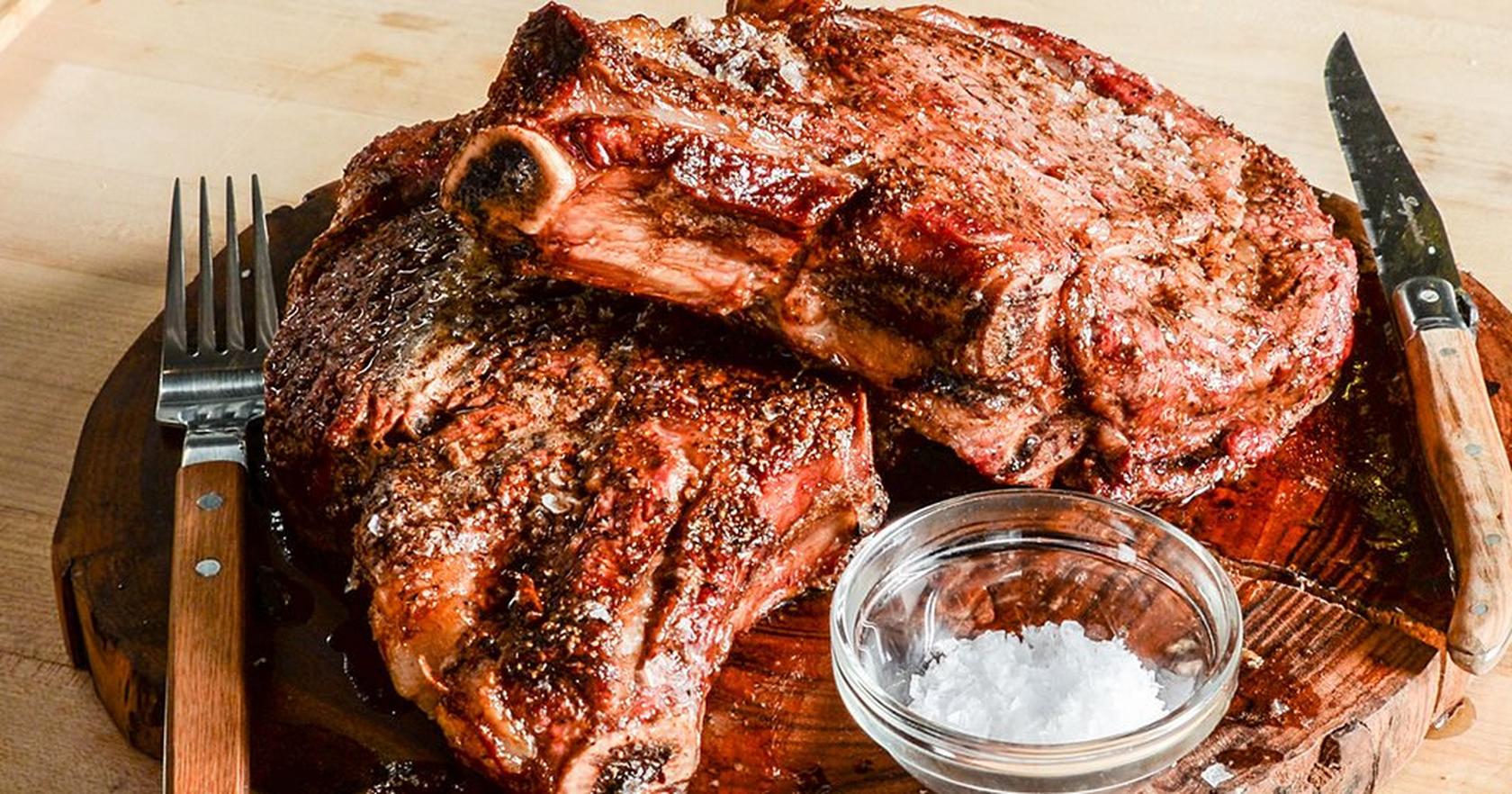
Did you know ribeye doesn't just come from the store? Ribeye steak is a delicious, smaller cut of meat that comes from the larger prime rib. By learning how to cut a ribeye steak you can have the exact dimensions you want for an ideal cook.
Here's how to make a ribeye on your own.
Where Does Ribeye Steak Come From?
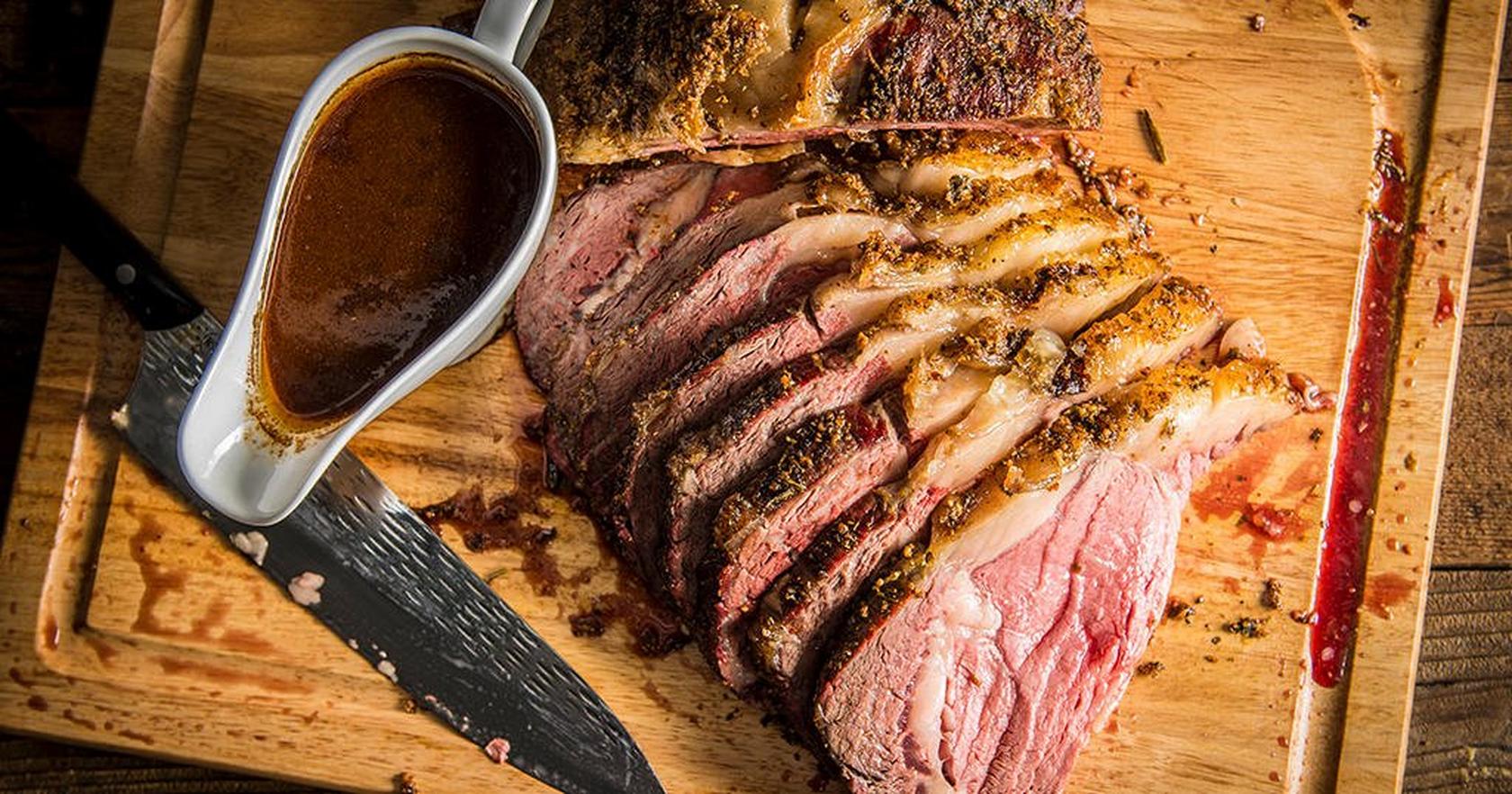
Ribeye steaks start as part of an entire prime rib. When you buy an individual ribeye steak at the store, the butcher has already cut it from the prime rib.
Instead of buying the steaks precut, you can buy an entire prime rib and do the cutting yourself.
A prime rib is cut from ribs 6 to 12 of the animal. Ribs 6 through 9 are called the chuck end, and are larger, more tender, and have more fat. Ribs 10 through 12 are the loin end. They are leaner cuts that tend to be a little tougher.
Why Would You Buy an Entire Prime Rib vs. Precut Steaks?
Saving money and having more control over what you're cooking are two important reasons to buy a whole rib roast instead of individual steaks.
Individual ribeye steaks typically cost between $12 and $20 per pound. An entire rib roast will usually cost less than $10 per pound. Whether or not the cost is a factor for you, cooking the exact cuts you want probably is.
Feeding a small group of dedicated carnivores? Turn your roast into thick, meaty, massive cowboy cut steaks. Cooking for a larger crowd? Take the bones out to make ribs some other time, and divide ribeye into smaller, flavor-packed steaks.
You can mix and match in a lot of different ways. We'll suggest a few below.
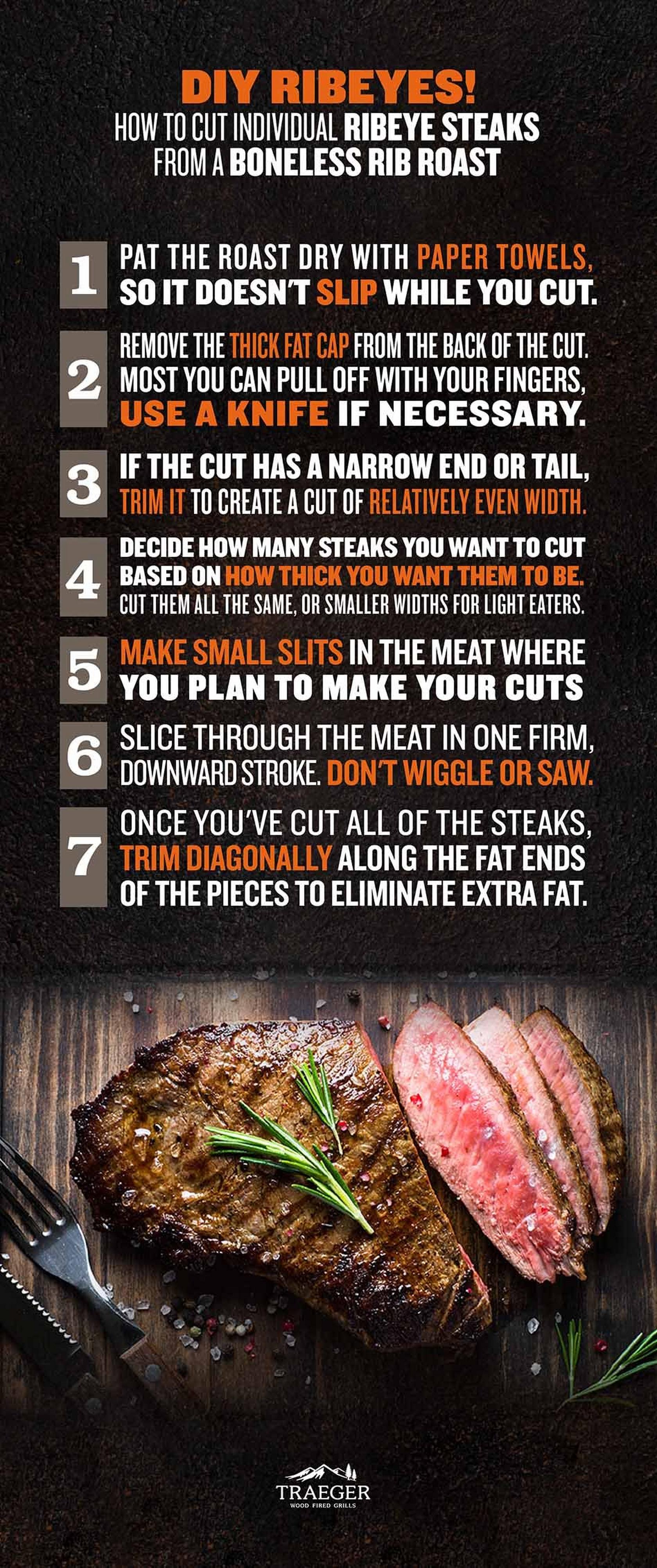
What Are the Different Ways to Cut a Prime Rib for Ribeye Steak?
The cuts you make from a prime rib can be neatly divided into two types: Bone-in cuts and boneless cuts. Obviously, you'll need to buy a bone-in rib roast to do the bone-in cuts. The boneless cuts can all be made with a bone-in rib roast by removing the bones to make back ribs.
Bone-in Ribeye Cuts
A bone-in ribeye (aka rib steak, ribeye) is a classic cut with delicious flavor and excellent marbling. Most premium butchers make this cut at least 1½ inches thick.

A cowboy cut steak (aka bone-in ribeye, rib steak bone-in, tomahawk steak) is a bone-in ribeye with the meat removed from the bone for a dramatic presentation. Cowboy steaks are usually cut extra-thick, 2½ to 3 inches wide, and can feed two people.
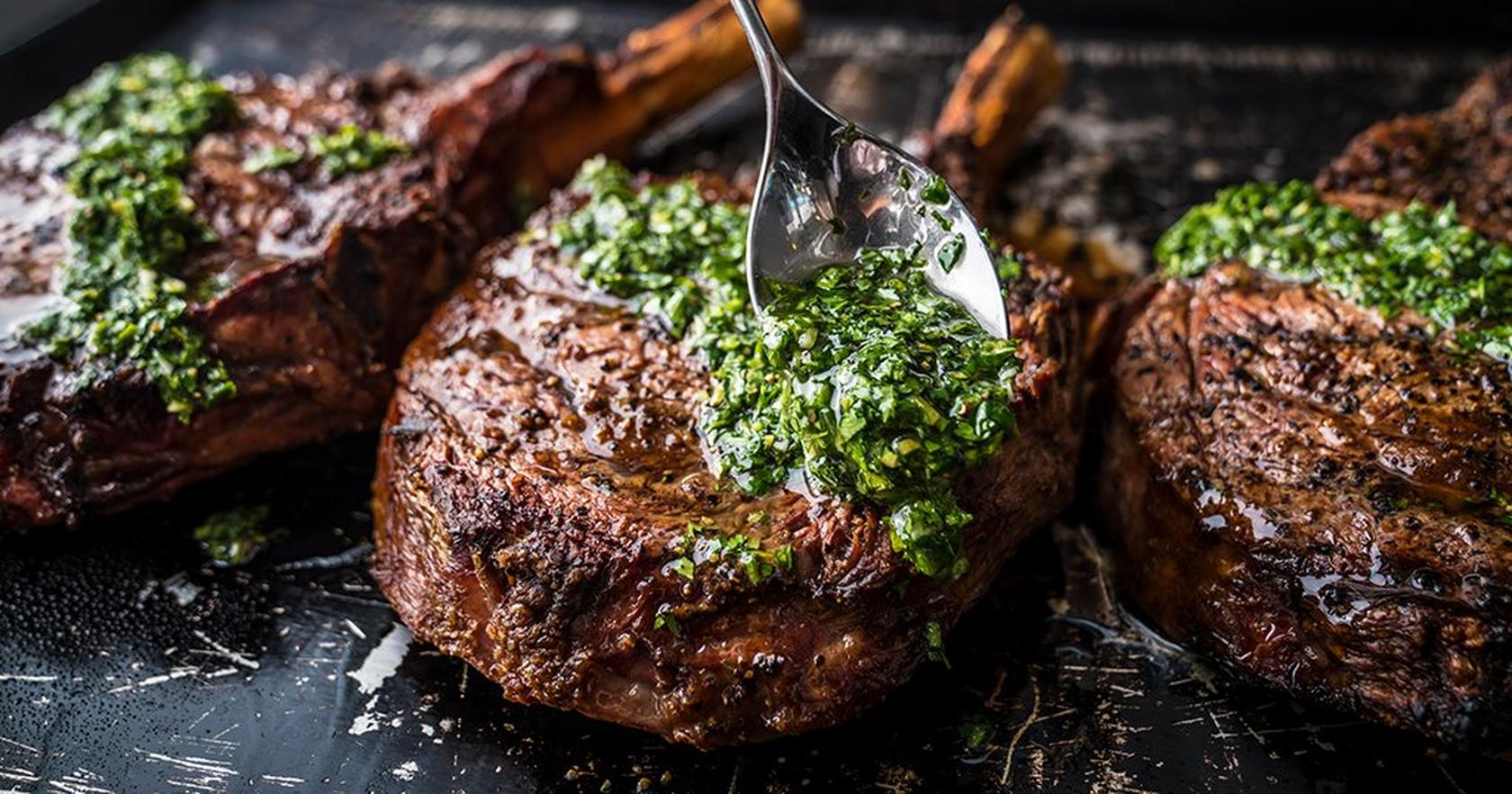
Back ribs can also be cut from a prime rib, and then smoked or grilled. Cutting out the back ribs from a bone-in rib roast leaves you with a boneless rib roast from which you can create the cuts below.
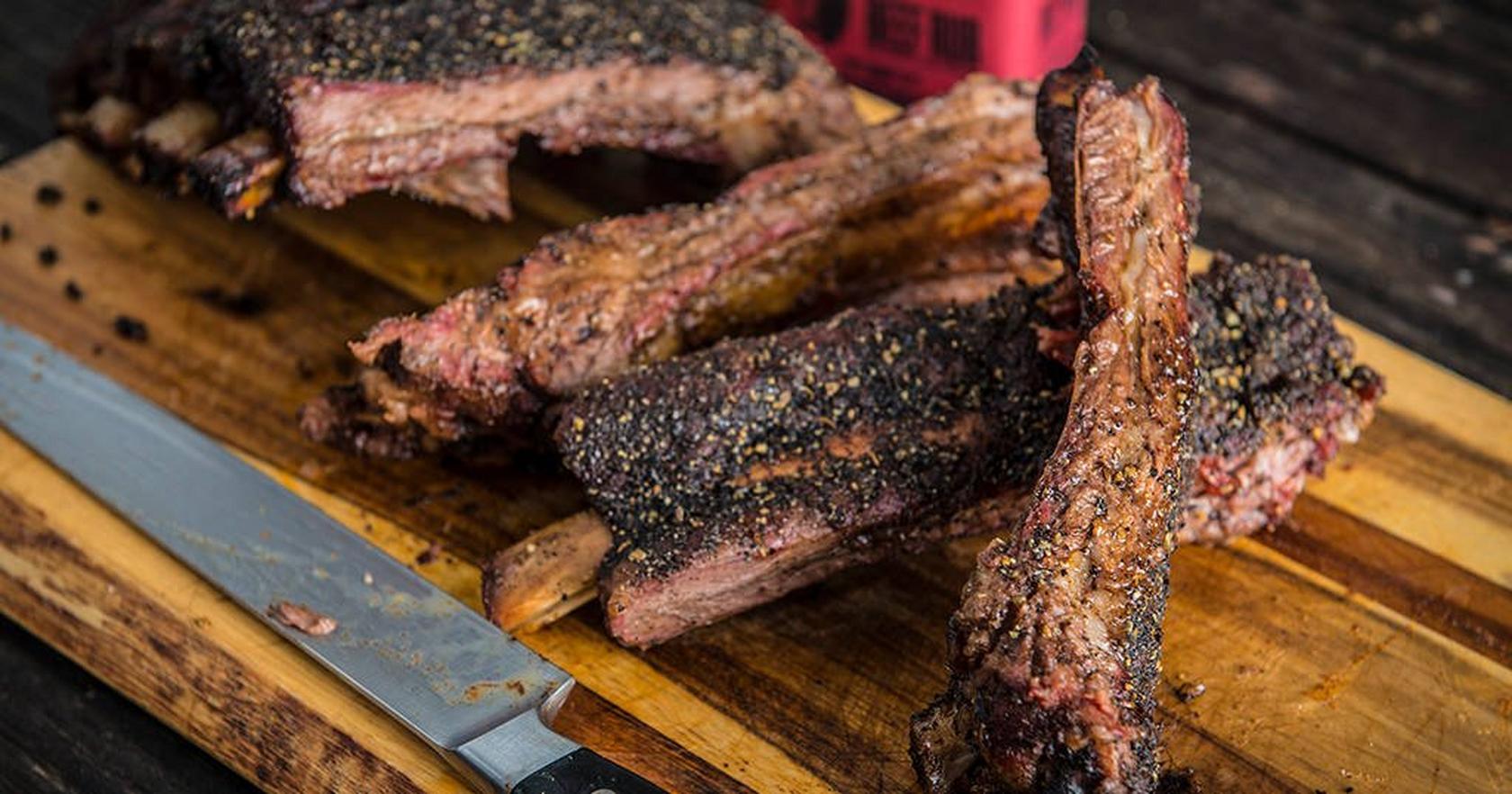
Boneless Ribeye Cuts
A ribeye (aka Delmonico steak, filet of ribeye) is a large, meaty, boneless cut that showcases flavor and multiple textures of beef. They are usually cut between 1 and 2 inches thick, but most grill experts prefer at least 1½-inch thickness.
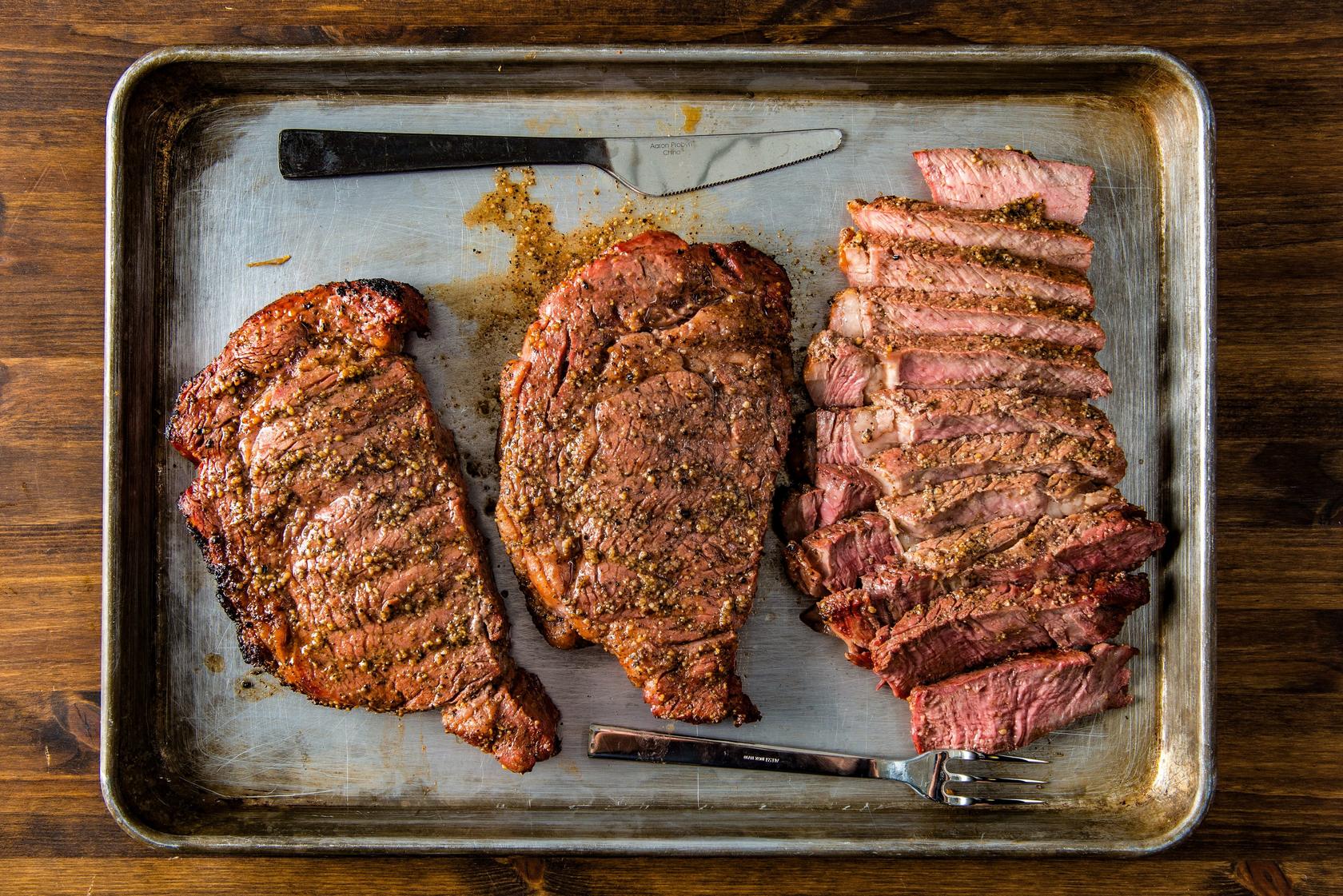
A thin-cut ribeye steak is the same cut simply sliced at less than 1-inch thickness. Those who do not like any pink in their steak may prefer a thin-cut ribeye.
A ribeye cap (aka Spinalis) is a small but extremely tender cut consisting only of the "cap" from the full ribeye.
A rib filet (aka filet of rib) is a large, meaty cut that consists of the full ribeye with the "cap" removed.
A Philly cheesesteak cut is cut the same as a thin-cut ribeye, then chilled and prepared for flash cooking to make Philly cheesesteak sandwiches.
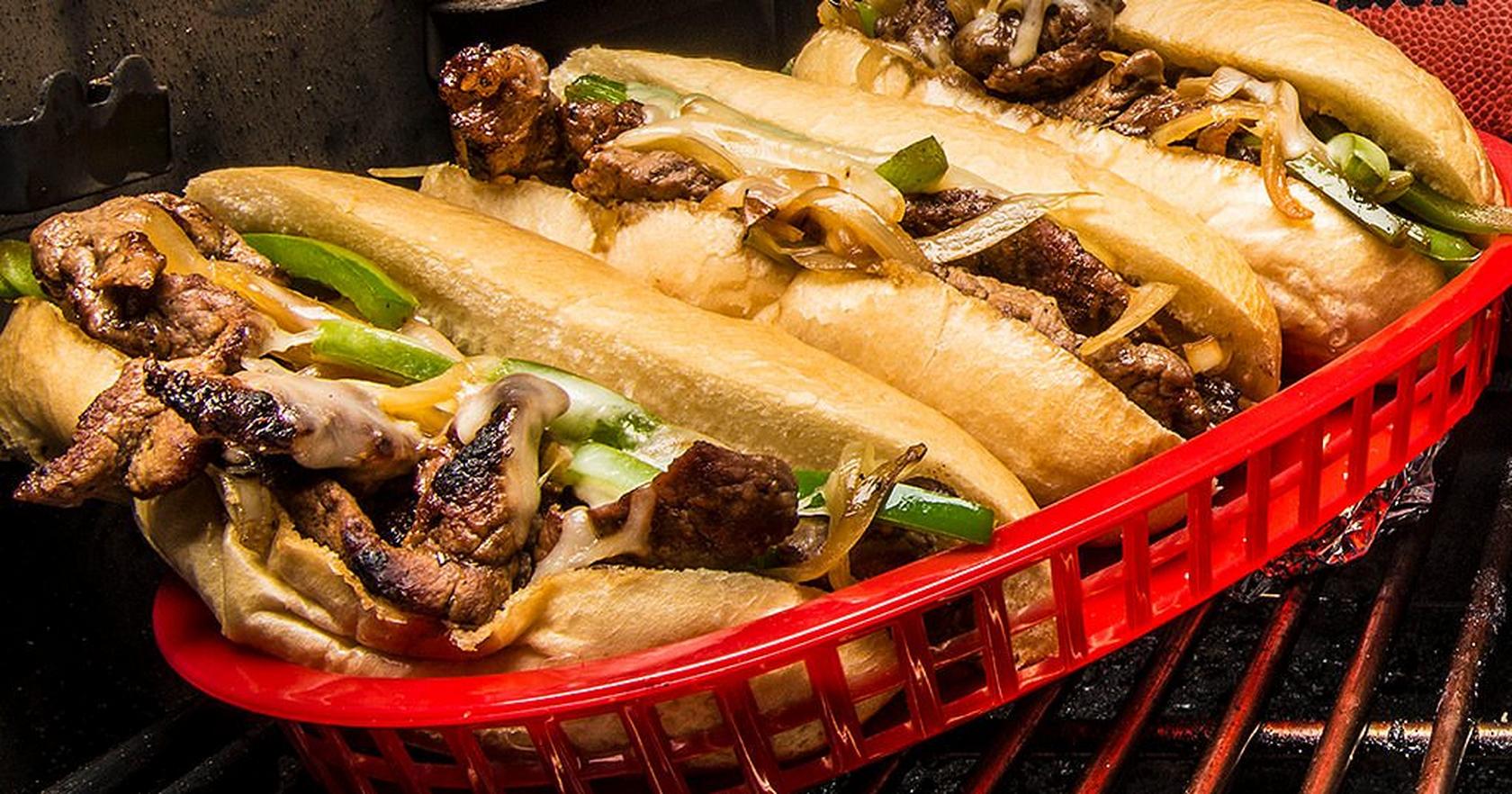
Kitchen Equipment for Cutting Ribeye Steaks
Three items are essential for properly cutting ribeye steaks:
-
A large cutting board (as large as the cut itself). You don't want the meat slipping off the board as you're cutting it.
-
A knife, such as a chef's knife, long enough to cut through the entire piece. You want to be able to cut through the roast in one motion. If you have to saw back and forth, you'll create unsightly ridges on the surface of the steak.
-
A smaller paring/boning knife. This utensil is essential for separating fat and sinew, and for trimming.
How to Cut Ribeye Steaks From a Boneless Rib Roast
To cut ribeye steaks from a boneless rib roast:
- Pat the roast dry with paper towels, so excess moisture doesn't cause the roast to slip while you're cutting it.
- Using your hands, fingers, and paring knife as necessary, remove the thick fat cap from the back of the cut. Often you can pull and use your fingers to separate it from the meat, using the knife for tough pieces of fat.
- If the cut has a narrow end or tail, trim it to create a cut of relatively even width.
- Decide how many steaks you want to cut based on how thick you want them to be. You can choose to cut all the steaks the same size, or cut a few thicker ones and some closer to 1 inch for lighter eaters.
- Using your long knife, cut slits in the meat where you plan to make your cuts -- just like marking a piece of plywood with a pencil.
- Slice through the meat in one firm, downward stroke. Don't wiggle or saw.
- Once you've cut all of the steaks, trim diagonally along the fat ends of the pieces to eliminate extra fat.
There are also a few alternate ways of slicing a boneless rib roast. Instead of trimming the fat at the end of the process, you can cut it all off at once before slicing the rib eye. You'll be taking off a small amount of meat, too, which you can use to grill or smoke meat tips.
You can also separate the tender cap or spinalis muscle, creating two steaks from a slice of the roast -- the spinalis or cap, and the rib filet.
Another option is to leave some portion of the chuck end whole as a roast you can cook similar to a whole prime rib, and cut the rest into steaks. It's your cut. You're the boss.
How to Cut Ribeye Steaks From a Bone-in Rib Roast
A professional butcher can create bone-in ribeye steaks of any thickness by cutting them on a meat bandsaw. With home equipment, you can only cut between the bones, not through them. This means that your steaks will be as wide as the bones are -- probably at least two inches.
The steaks will be very large (as much as 40 ounces). They're big enough to serve two and thick enough that you could even roast them.
To cut ribeye steaks from a bone-in rib roast:
- Pat the roast dry with paper towels so excess moisture doesn't cause the roast to slip while you're cutting it.
- Using your hands, fingers, and paring knife as necessary, remove the thick fat cap from the back of the cut. Often you can pull and use your fingers to separate it from the meat, using the knife for tough pieces of fat.
- If the cut has a narrow end or tail, trim it to create a cut of relatively even width.
- With the thickest bone ends facing up, find the gap between the first and second bones and slice through. As much as possible, slice through the meat in one firm, downward stroke. Don't wiggle or saw.
- Continue between all remaining bones.
- Remove excess fat.
- Remove all fat and sinew from the bones (aka frenching) for cowboy cut steaks.
How to Slice Ribeye for Philly Cheesesteak (or Other) Sandwiches
Tender and flavorful, ribeye makes delicious meat for a Philly Cheesesteak or other sandwich. Start with a thin-cut (1 inch or less) boneless ribeye steak.
- Wrap the raw steak in plastic wrap.
- Place in the freezer for 20 minutes.
- Unwrap the chilled steak, and slice as thin as possible against the grain of the meat.
How to Cut a Ribeye Steak After Cooking
If you portion your rib roast into steaks, you may want to cut them into bite-size slices after cooking. Here's the best way to do that.
- After the ribeye reaches the desired internal temperature (135 degrees Fahrenheit for medium-rare), remove from the heat, and allow to rest for 10 minutes.
- If the ribeye is bone-in, use a small paring knife to cut the meat away from the bone.
- Once the ribeye steak is boneless (or if it started that way), slice the meat against the grain into slices, between 1/2 and 1 inch thick, depending on your preference.
How to Smoke A Ribeye Steak
Buying a whole ribeye roast allows you to create the delicious cuts you prefer whether that's a thick, meaty, bone-in cowboy cut, or thin, incredibly tender boneless cap steak. However you slice it, there's one ideal way to cook a ribeye steak — on a Traeger wood pellet grill.
A Traeger will deliver terrific natural smoke flavor along with consistent temperatures and cooking times. No need to worry about flare-ups that burn your steaks, or hotspots that cook half the steak to well done and the other to rare. On a Traeger, you'll get the results you want every time.
While there are different methods for different recipes to cook a ribeye steak on the Traeger, here's a good go-to guide to go off of:
- Preheat your Traeger to 225 degrees.
- Place the steak directly on the grill and smoke until the internal temperature reaches 120 degrees (approximately 45 minutes).
- Remove the steak and let it rest while your Traeger heats up to 500 degrees.
- For 6-8 minutes, sear the steak until the internal temperature of the streak reaches 135 degrees for medium rare, or whatever internal temperature you prefer.
Now that you have all that you need to cut a ribeye steak like a pro, get to grillin'.
Smoked Chili Rib-Eye Steaks
by Traeger Kitchen
31 Reviews
Prep Time
10 Min
Cook Time
1 Hr
Serves
6
Pellets
Signature Pellet Blend
A spicy homemade chili paste brings the heat to this classic cut of steak and a 45-minute smoke sesh infuses pure wood-fired flavor.
Ingredients
main
| 2 Large | cloves garlic, minced |
| 1 Teaspoon | Salt |
| 2 Tablespoon | chili powder |
| 2 Tablespoon | Worcestershire sauce |
| 2 Tablespoon | olive oil |
| 1 Teaspoon | brown sugar, packed |
| 1 Teaspoon | ground cumin |
| 4 | (10-12 oz) rib-eye steaks |
1
Mash the garlic and salt into a paste in a small bowl. Stir in the chili powder, Worcestershire sauce, olive oil, brown sugar, and cumin. Rub all surfaces of the steaks with the mixture.
2
Place the steaks and the remaining rub into a large resealable plastic bag and refrigerate for 4 hours or up to 2 days.
3
When ready to cook, set the Traeger temperature to 225˚F and preheat, lid closed for 15 minutes. For optimal flavor, use Super Smoke if available.
4
Place the steaks on the grill grate and smoke for about 45 minutes (until the internal temperature reaches 120˚F).
5
Remove the steaks and set aside to rest. Increase the temperature to 500˚F and preheat, lid closed for 15 minutes.
6
Return the steaks to the grill and cook until desired doneness (135˚F for medium-rare) or 3-5 minutes on the first side and 1-2 minutes on the second side.
7
Let the steaks rest for 5 to 10 minutes before serving. Enjoy!